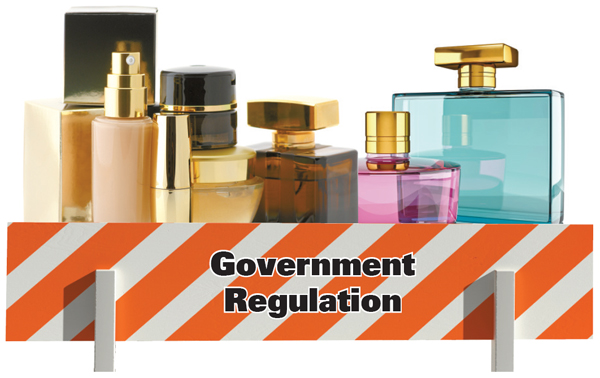Small importers face big obstacles

The importer, who wished not to be named, said the government branch office asked that he get a psychiatric evaluation. Current law requires a psychiatric assessment for CEOs who want to sell cosmetic products in Korea.
The logic behind the evaluation stunned the importer. As cosmetics can cause side effects if not distributed safely, a CEO has to be psychologically stable, he was told.
The importer did as he was asked. But then there was another requirement. In order to import cosmetics, he has to have at least one employee with a chemistry degree or experience working at a cosmetics manufacturer.
“These are such unrealistic regulations,” said the importer. “In many cases, small importers are one-man operations. Hiring a college graduate with a chemistry degree is just out of touch with reality.”
The importer said he could have sold the product at least 10 percent cheaper than the current retail price. But because of the government’s regulations, he scrapped the plan.
Such inflexible government regulations are considered one of the main obstacles for small importers to thrive and ultimately lower the price of imported goods through fierce competition.
Even if an importer succeeds in obtaining a permit to import cosmetics products, there are other barriers they have to overcome. One of which is the redundant yet complicated testing system.
Cosmetics have to pass a ministry test to prove they are identical to those of the same brand already being retailed. Though all products are the same, the test requires submitting separate samples depending on serial codes, which are usually assigned differently.
“Manufacturers use different serial codes to identify when and where it was produced, even among the same product,” said an importer, who also requested anonymity.
However, if each serial code of the same product is different, each product has to undergo a government sample test.
For example, if an importer brings in 100 lotions that are identical but have 10 different serial codes for groups of five items, each code has to be sample tested. That means half of the shipped lotions have to be sent for government testing.
“It’s really hard to understand why so much of the same product has to undergo sample testing when all it needs is a single test,” the importer said.
The ultimate effect of excessive and inflexible government regulation is higher prices for consumers.
According to a finding by Saenuri Party lawmaker Kim Hyun-sook, based on data provided by the Food and Drug Safety Ministry, imported cosmetics and perfumes sold in Korea were six times more expensive than their initial cost.
The retail price of the popular Japanese SK-II Facial Treatment Essence, which posted a record import by value last year, was 199,000 won ($188), which is four times higher than the initial product cost of 51,000 won.
The toughened regulations for importing high-end watches completely shuts out small, private importers.
In July, the government made it mandatory to write down the specific manufacture date as well as the country where the product was made and imported from for all imported watches.
And the law also revised quality management of manufactured products to enhance safety.
However, such information is available only to the manufacturer, and those that have access to it are importers with exclusive contracts with manufacturers.
Small importers who sometimes make bulk purchases through wholesalers are effectively shut out of the Korean market by the regulation.
The government in April last year held a hearing with small importers to discuss their hardships. The sole solution that resulted from the session was the implementation of a quick response code system in August 2012.
The QR code installed on products verifies that the imported goods are not imitations and that they were shipped into the country by using the proper procedures.
However, the new verification policy failed to gain support and has been deemed ineffective.
First, in order to get the QR codes, the importer must have more than one import record in the past two years with no customs or trademark violation. Additionally, he or she should have no record of unpaid customs taxes.
Small importers say it is not easy to meet all the requirements, and the cost of a QR code - 150 won each - with the possibility of an additional value-added tax, assessed depending on the product, is considered a burden.
Yet the Korea Customs Service is looking into raising the QR code price further.
In some cases, large exclusive importers use the government system to drive small importers out of the market.
Many small operators purchase their merchandise for import with cash up front.
But when exclusive importers raise suspicions over whether the product is genuine or not, the customs service usually holds the products until their authenticity is proven.
This lands a heavy blow on small importers.
In the worst-case scenario, capital circulation stops, the investigation continues for an extended period of time, and the small importers go bankrupt.
By Choi Ji-young [jiyoon.kim@joongang.co.kr]










with the Korea JoongAng Daily
To write comments, please log in to one of the accounts.
Standards Board Policy (0/250자)